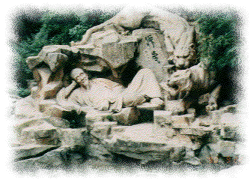Old & New
The Culture of China is quite unique and special. It contains wonderful and delightful arts and customs as well as very interesting ways of life. Yet there is one aspect of Chinese Culture that truly sets it apart from other cultures and countries: the connected split between Old and New.
Chinese Culture as a whole can clearly be divided into two: Traditional Culture and Modern Culture. Like all other cultures of the world, the Chinese Culture is changing continually. Throughout history it has evolved and changed, especially during the 20th century.
Social scientists believe that there are four chief factors that cause a culture to change: changes in the environment, contact with other cultures, invention, and the further development of the culture itself. The last three have proved to be the key factors in China's cultural change from old to new, as China began opening its doors to foreign relations and making scientific, technological, social, and economic advances.
Before the mid-1900's, traditional Chinese culture was prominent as people and families lived by traditional values and beliefs as well as old teachings and ways of life. However, after the political change in 1949, a new culture developed as modern Chinese culture was developed.

|
Today, however, the Culture of China is not traditional nor even fully modern, as most people would think it to be; it is a combination of both. You may see high-rise buildings and people wearing western-style modern clothing in many parts of China today; or you may see a Sea-World-type Ocean Park in Hong Kong or an upbeat city night life in Shanghai. And the ways of life of the Chinese people might seem similar to those of the United States or Europe.
Yet you will also see traditional festivals being celebrated, tributes to ancient styles and artifacts, the integration of traditional sounds in modern music, celebrations of traditional art and design through stores and classes, and special concerts and programs shown both live and on TV devoted to the traditional culture. In the rural areas and villages traditional culture is even more prominent, as country farmers and village people continue to live simple lives without modern technology.
Many of the topics and areas explored in this site are divided into the sections of Traditional and Modern. The two "subcultures" of Chinese Culture are clearly distinct and different; yet, they are also connected together, even "co-existing". Although separate in history, they are linked together in the Chinese society.



 Chinese Culture
Chinese Culture